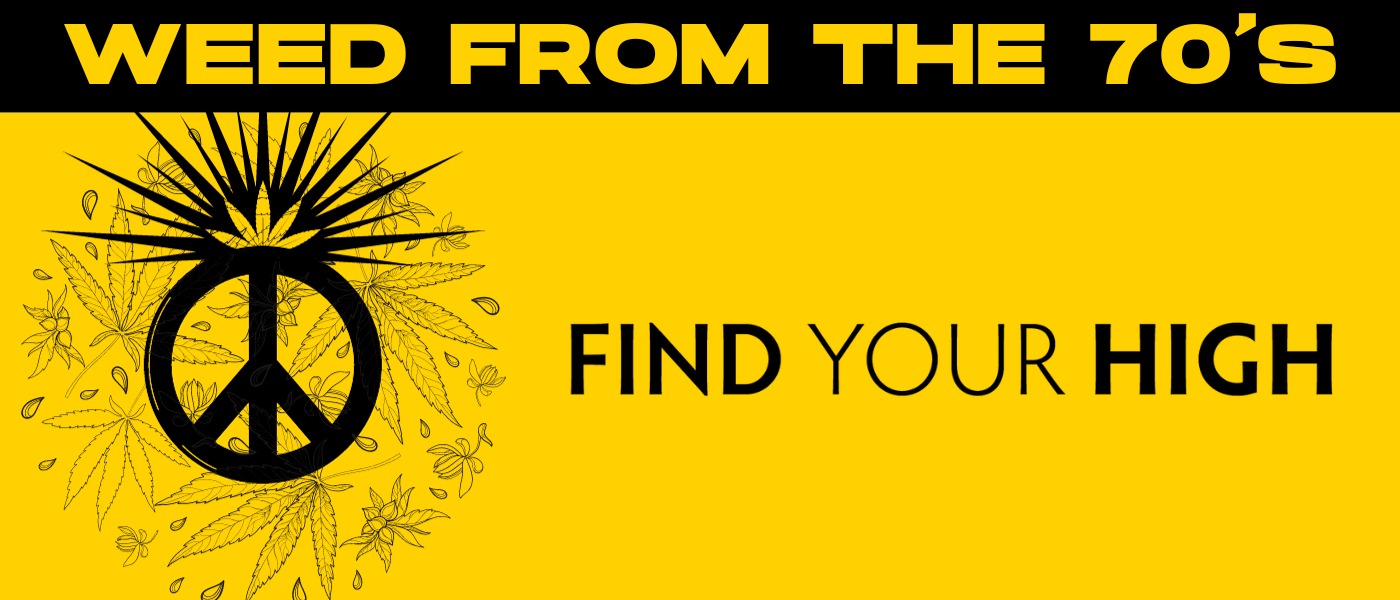Traveling back to the groovy 1970s, we find ourselves in a decade full of cultural and historical significance. From anti-war protests to the arrival of disco, this decade was nothing short of transformative.
Amidst all the chaos and change, one symbol stood out – weed from the 70s. This innocuous green plant became a significant cultural symbol. Embraced by the counterculture, weed quickly became synonymous with a radical generation seeking change and freedom.
In this blog, we’ll explore the popularization of marijuana during the 70s, scrutinizing its influential role in shaping societal norms and its lasting impact that continues to this day. We’ll explore its significance against the backdrop of 1970s pop culture influences, its representation in the arts, and how it came to be an enduring symbol of the era.
So buckle up for a time-traveling journey to an era that still echoes in cultural significance.
The Cultural Landscape of the 1970s
Before we get into the nitty-gritty of weed culture in the 70s, let’s take a moment to appreciate the overall cultural significance of that groovy decade.
The 1970s were a time of significant social, political, and cultural upheaval. Major social and political movements, including the ongoing struggle for Civil Rights and widespread protests against the Vietnam War, underpinned this era.
This was also the period when anti-establishment counterculture and the hippie movement were at their peak, advocating for peace, love, and freedom. The phrase ‘Make love, not war’ became their motto, opposing the violence and conflict exhibited in the mainstream culture.
Moreover, the 1970s witnessed the crucial influence of music, films, and literature in shaping the era. The counterculture spirit was fueled by iconic bands like The Beatles and The Rolling Stones, while films and literature mirrored the shifting perspectives and increasing distaste for conventional societal norms.
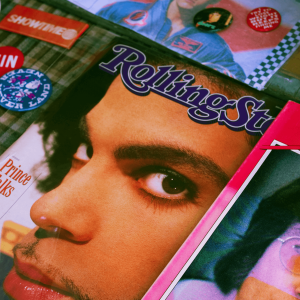
Marijuana in the 1970s
The 1970s represented a major era in the cultural history of the legal cannabis market.
During this period, marijuana use became increasingly mainstream, shifting from the fringes to the forefront of popular culture. This was largely driven by a growing social acceptance of weed, catalyzed by the counterculture movement that saw cannabis as a symbol of freedom and rebellion.
The connection between marijuana and the counterculture was loud and clear, with weed often taking center stage in the music, literature, and visual art of the era. This normalization of cannabis use contributed significantly to the broader conversation about drug policy and reform, setting the stage for debates that continue to this day.
The Evolution of Cannabis Strains
Marijuana has transformed drastically over recent decades.
This transformation is attributed to significant advancements in cultivation techniques and selective breeding practices, resulting in a vast number of new strains, each possessing unique characteristics.
Additionally, it’s evident in simpler advancements such as high-end packaging to replace the poor packaging of the 1970s.
Overview of The Typical Strains Available in The 1970s.
In the 1970s, the most popular strains were landraces that originated in regions such as Mexico, Colombia, Thailand, and Afghanistan.
These classic sativa landrace strains, including the Acapulco Gold strain, Thai Sticks strain, and other strains were generally classified as either Sativa or Indica. Still, they were less potent compared to modern strains, the THC levels typically ranging between 1 and 8 percent.
How Cultivation and Breeding Practices Have Evolved
Since the 1970s, cultivation and breeding practices have been revolutionized, leading to a significant increase in the potency and diversity of marijuana strains.
Commercial growers began to experiment with cross-breeding different strains to engineer new varieties with desired traits, such as higher THC levels or specific flavor profiles.
Cultivation and growing techniques have also seen substantial advancements, including indoor growing and hydroponics, which allow for greater control over variables such as lighting, temperature, and nutrient levels.
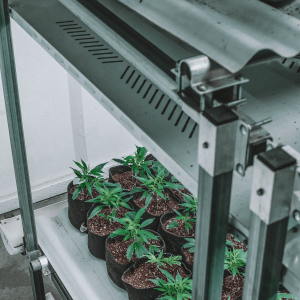
A Comparison of 1970s Weed Strains to Contemporary Varieties
Comparatively, contemporary marijuana strains are more diverse and potent than their 1970s counterparts.
Modern strains often possess THC levels well above 15 percent, some even reaching 30 percent or higher. This increase in potency is a direct result of sophisticated breeding practices that have been refined over decades.
Additionally, strain classifications have expanded beyond just Sativa and Indica, with hybrid strains now being the most common variety.
Needless to say, the evolution of cannabis strains, driven by advancements in cultivation by cannabis breeders, has led to an era of unprecedented variety and quality.
Smoking and Consumption Methods in the 70s
Back in the 1970s, smoking weed was a relatively different experience from what it is today.
Traditional methods primarily involved the use of hand-rolled joints, pipes, and an occasional bong. Rolling papers were often sourced from cigarette packets or specially purchased for the purpose.

Alongside these conventional methods, the resourcefulness of cannabis users was well apparent, leading to an onslaught of DIY paraphernalia and techniques.
Improvised pipes and bongs made from everyday household items like soda cans, apple cores, or even carved potatoes were commonplace. The use of “roach clips”, now somewhat of a relic, was a popular method to smoke the final, ungraspable bit of a joint without burning fingers. Why these ever went out of style, we’ll never know.
Contrasting with today’s modern consumption methods and technology, it’s clear that we’ve come a long way since the ’70s.
The evolution of cannabis consumption has been influenced by technological advancements, leading to the development of sophisticated tools such as vaporizers and dab rigs.
Even the transition from old-school hand-rolled joints to readily available pre-rolls signifies how dramatically the culture of cannabis consumption has evolved over the decades. And while older stoner traditions still prevail in today’s modern age, the new-school approach prioritizes health and innovation.

The Legal Landscape of Weed in the 70s
The legal market status of cannabis in the 1970s was a far cry from today’s weed industry.
Needless to say, you couldn’t just pay a visit to your local dispensary to restock your stash. In fact, your local dispensary didn’t even exist; rather, you depended on your local dealer to supply your much-needed bud.
Marijuana Laws and Regulations in the 1970s
The 1970s marked a significant shift in the legal treatment of marijuana in the United States.
The decade started with the passage of the Controlled Substances Act in 1970, which classified marijuana as a Schedule I drug, alongside heroin and LSD, marking it as having a high potential for abuse and no accepted medical use. Not the best start for U.S. stoners.
However, as the decade progressed, there was a growing movement towards decriminalization, with Pacific Northwest states like Oregon and Alaska passing legislation to reduce penalties for possession.
Historical Events Shaping the Legal Status of Weed
Several key events in the 1970s helped shape the current legal landscape of marijuana.
In 1971, President Nixon declared a “war on drugs,” dramatically increasing federal funding for drug-control agencies and measures.
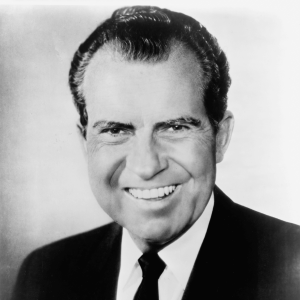
In contrast, the 1972 Shafer Commission, appointed by Nixon himself, recommended decriminalizing marijuana possession, but its recommendations were ignored.
Moreover, in 1976, the federal government initiated a program providing compassionate use of medical marijuana, a move that contradicted its Schedule I classification.
Progress and Changes in Marijuana Laws Since the 1970s
In the decades since the 1970s, marijuana laws in the U.S. have continued to evolve, reflecting changing societal attitudes and scientific understandings.
In the 1990s and 2000s, several states legalized medical marijuana use, despite federal prohibition. The 2010s witnessed an even more drastic shift: the recreational use of marijuana was legalized in several states, starting with Colorado and Washington in 2012.
Despite these state-level changes, marijuana remains illegal at the federal level, revealing the complex and evolving legal landscape of weed in the U.S.
The Legacy of 1970s Weed Culture
The 1970s was a decade that marked a significant shift in the cultural perception of marijuana.
It was during this era that weed culture began to take root and manifest in various forms of media, influencing and shaping the contemporary cannabis culture we know today.
Influence on Contemporary Cannabis Culture
The 1970s weed culture has greatly influenced today’s cannabis scene. The counterculture of the ’70s, which advocated for peace, love, and freedom, embraced marijuana as a symbol of rebellion and self-expression.
Today, this spirit of defiance and individualism still infuses the cannabis community, inspiring activists, artists, and advocates.
Nostalgia and Continued Interest in 1970s Weed
Nostalgia for the 1970s has led to a renewed interest in the weed culture of that time. Retro sativa landrace strains and vintage paraphernalia have become popular among both old and new cannabis users.
This ongoing fascination reaffirms the historical relevance of 1970s weed culture.
Cultural and Social Impact on the Perception of Marijuana
The 1970s also laid the groundwork for the social acceptance of marijuana. The decade’s liberal attitudes towards weed have helped destigmatize its use, altering public perception.
As a result, we have witnessed the increasing normalization and legalization of weed in various parts of the world. Overall, the cultural and social impact of this era continues to shape our understanding and acceptance of cannabis today.
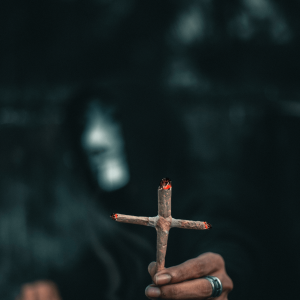
Conclusion
To sum it up, the 1970s brought a major shift in cannabis culture that still has an impact today.
It was a time when cannabis became widely embraced by counterculture movements and discussions about its medicinal properties began.
The 70s weed culture was also marked by influential figures, music, and social change, showing a greater openness to new experiences and perspectives.
This era’s legacy continues to shape our current cannabis policies, attitudes, and usage — even if the weed today is a bit stronger. It’s an intriguing history that invites us to explore our personal connections to this transformative time.
Frequently Asked Questions
1. What kind of weed did they smoke in the 70s?
In the 1970s, the most high potency strain was known as “Columbian Gold.”
Originating from—you guessed it—Colombia, this landrace sativa strain was among the most potent strains, widely sought after for its high THC content compared to other options available at the time.
This variety was defined by its golden hue and distinctive sweet aroma. Other popular strains during this era included Acapulco Gold, Panama Red, and Thai Sticks. However, it’s crucial to note that the potency of these strains was much lower than many modern-day cannabis strains such as Northern Lights, Purple Thai, and other tropical-sounding strains.
2. What was good weed called in the 70s?
In the 1970s, high-quality cannabis consumed was often referred to as “Sinsemilla.” The term, derived from Spanish, means “without seeds” and was used to describe potent, seedless cannabis.
3. What was the most popular weed in the 70s?
In the 1970s, the most popular strain of cannabis, or ‘weed’, was a thing called Acapulco Gold. Originating from the areas around Acapulco, Mexico, this cannabis strain was renowned for its potency and unique color. Its popularity surged due to its high THC content and characteristic golden hue, with a reputation that spread across the United States and beyond.
4. What was the average potency amount of weed in the 1970s?
In the 1970s, the potency of cannabis was significantly lower than today’s cannabis products. On average, the THC content was typically around 1-2%. It was a period before the arrival of sophisticated cultivation techniques and genetic manipulation that led to the higher potency strains we see in the current market.

 Rewards
Rewards



